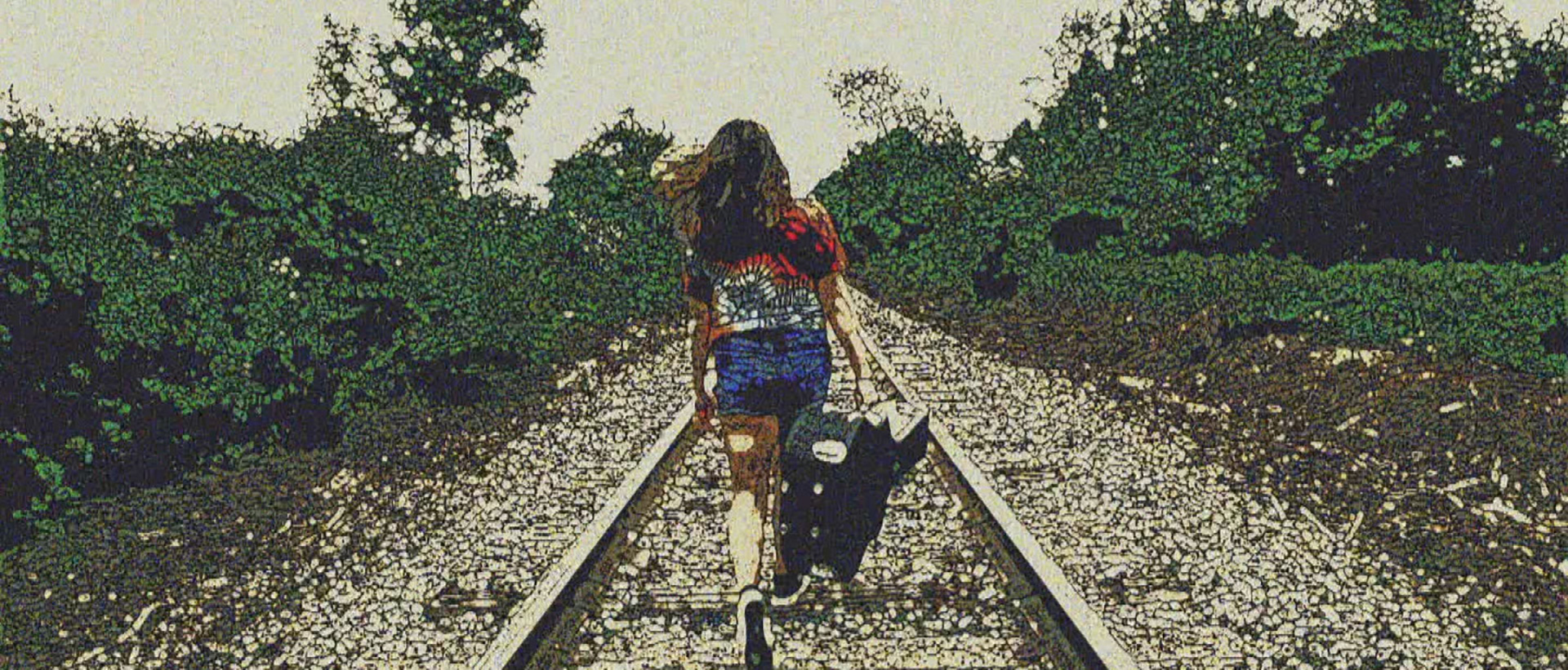Every story can be tackled from multiple angles depending on its narrative intent and lead character. It’s therefore a conscious choice when selecting a focal point because everything that follows will inherently center them as the protagonist. While generally not a bad thing considering most stories we tell are purposefully drawn to lift up their subject in that way, some demand a more complex and nuanced approach. The reason is simple: certain events prove more important than any single player within. And that’s definitely the case with what happened to the Knowles family in 1973. It’s easy to look back with hindsight and breathe easy knowing it all worked out, but that wasn’t a luxury they could afford then. Not when their fourteen-year-old Content ran away from a Vermont camp.
There’s a moment at the very beginning of Meg Knowles’ Runaway where her older sister Content Love Knowles looks towards the camera and says, “This movie was supposed to be about you.” It’s interesting because it serves as a comical deflection setting the stage for her to be withholding as well as evidence that artistic intent sometimes changes. Maybe this exchange placing the two women beside their mother Marguerite Doritty during a wine tour was meant as one chapter of a larger piece focused within. Maybe it wasn’t. Does either alter the choice of singling out Content’s two-month “walkaway” that summer as being captivating enough to earn its own stage? No. Especially not once we realize it demands being told on two fronts: the adventure and the worry.
A third front exists too as Knowles discovers during the course of these intimate interviews forty years later. Because while Content was the catalyst by seeking the space to grab ahold of her autonomy at an age in which many wouldn’t have the courage and Marguerite was left in a reactive position marked by a parent’s desperation to understand what was happening, Meg was actually given the room her sister sought by being caught on the outside of those parallel journeys. She no longer had Content’s shadow to escape. She could be her own person and discover new ways to thrive independently amidst the chaos. Meg still worried her sister might be dead after weeks pass without contact, but she also embraced the opportunity it provided.
And she shouldn’t be punished for that just like Content shouldn’t be punished for not once writing or calling to say she was okay. They can punish themselves for those thoughts (and, as we see on-screen, they surely do), but there’s something to a desire to detach oneself from a life that doesn’t quite seem your own. Meg describes her family as epitomizing “waspy” stereotypes in the ways in which they talk to avoid talking. So while Content admits the potential strangeness of running away without physical abuse or other dire circumstances to blame as a cause, the stifling environment created during the Knowles sisters’ youth isn’t nothing. Compare it with the hippie lifestyle of hitchhiking and communes Content chose instead and that truth becomes unavoidable.
It shouldn’t be a surprise then to see that Knowles cuts between those worlds through their memories. We hear from Content with a smile about what drove her to do it and what she knew had to happen to ensure she wasn’t caught on her way to California. And we hear from Marguerite through tears about her experience of being left in the dark. One laughs about living with the White Panthers, Orchestra Luna, and hitching a ride with criminals while the other can barely get through reading the letters she saved of well wishes from family and friends. Content’s dream became Marguerite’s nightmare and that harsh duality kept them from ever really talking about it. Sometimes old wounds must be torn open to finally let them heal.
That’s what Runaway is in many regards: a cathartic release. We see these women tense up depending on the questions asked by Meg to her family or producer Brian Milbrand to Meg and notice those moments of earned relief when words are able to shed light on what had too long been left silent. It’s by no means the end all be all on the subject for them since so many details remain missing and perhaps always will depending on what Content chooses to divulge away from the camera, but it’s a resonant start that many families spanning extreme generational gaps like Marguerite to her daughters or them to today’s teens might relate. One person’s risk proves another’s necessity after all. You must depart in order to arrive.
The finished piece is very home movie in aesthetic with interviews and photos interrupted by the occasional reenactment pumped through a visual filter to separate its fictionalized account from the rest. They travel to scenes from that summer whether areas Content stayed (Boston, Austin, Berkley), New York’s Washington Square (where Marguerite sat for ten days in hopes her daughter would appear busking with the guitar she could barely play), or the Vermont horseback riding camp where the Knowles’ physical and emotional paths diverged. It becomes a scavenger hunt through the painful scars of their minds to confront the fact that they were each left irrevocably changed by those two months despite processing their impact so differently. And by learning the others’ perspectives, they may better understand their own.
Runaway is currently playing the Buffalo International Film Festival’s online edition.

